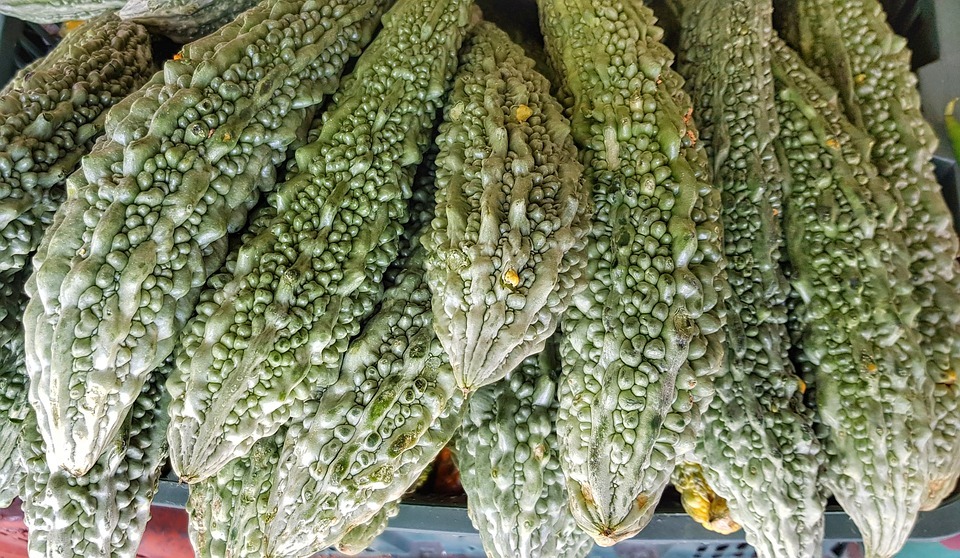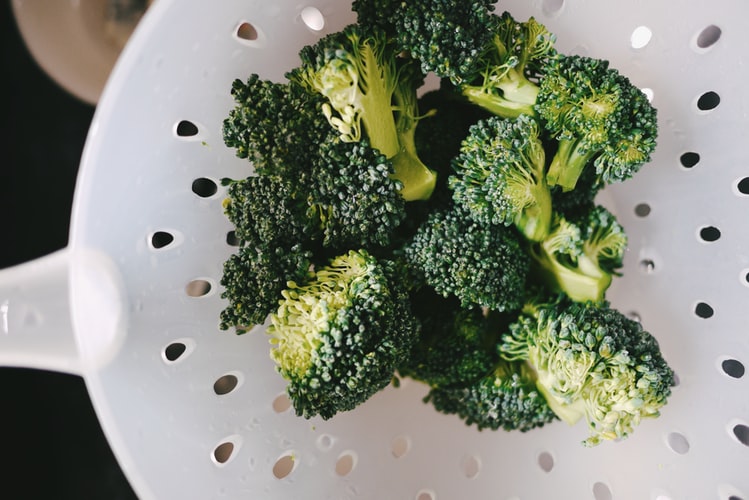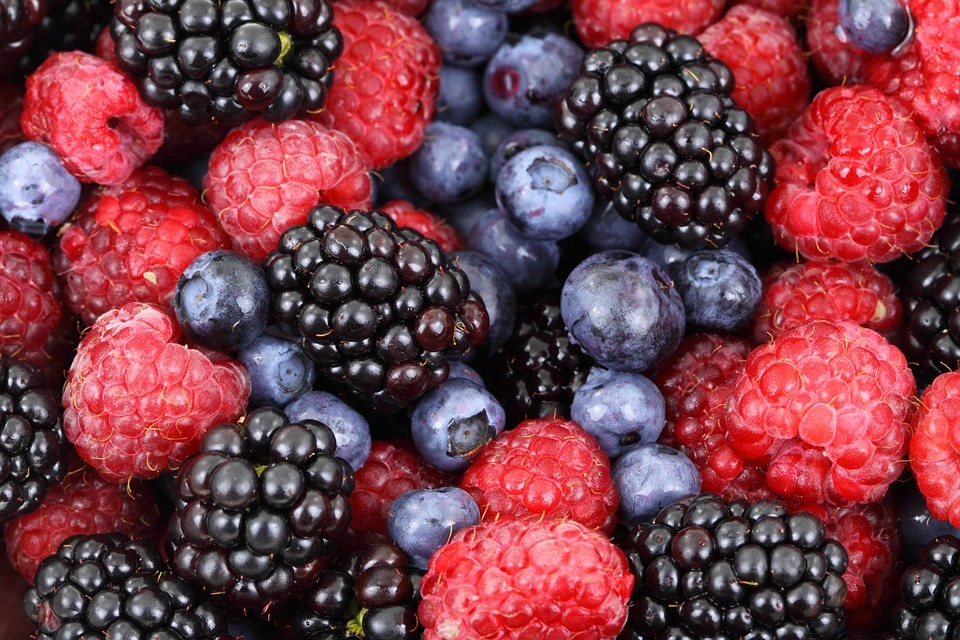Nutrition Facts and Benefits of Vegetable Juice: A Comprehensive Guide to Health in a Glass
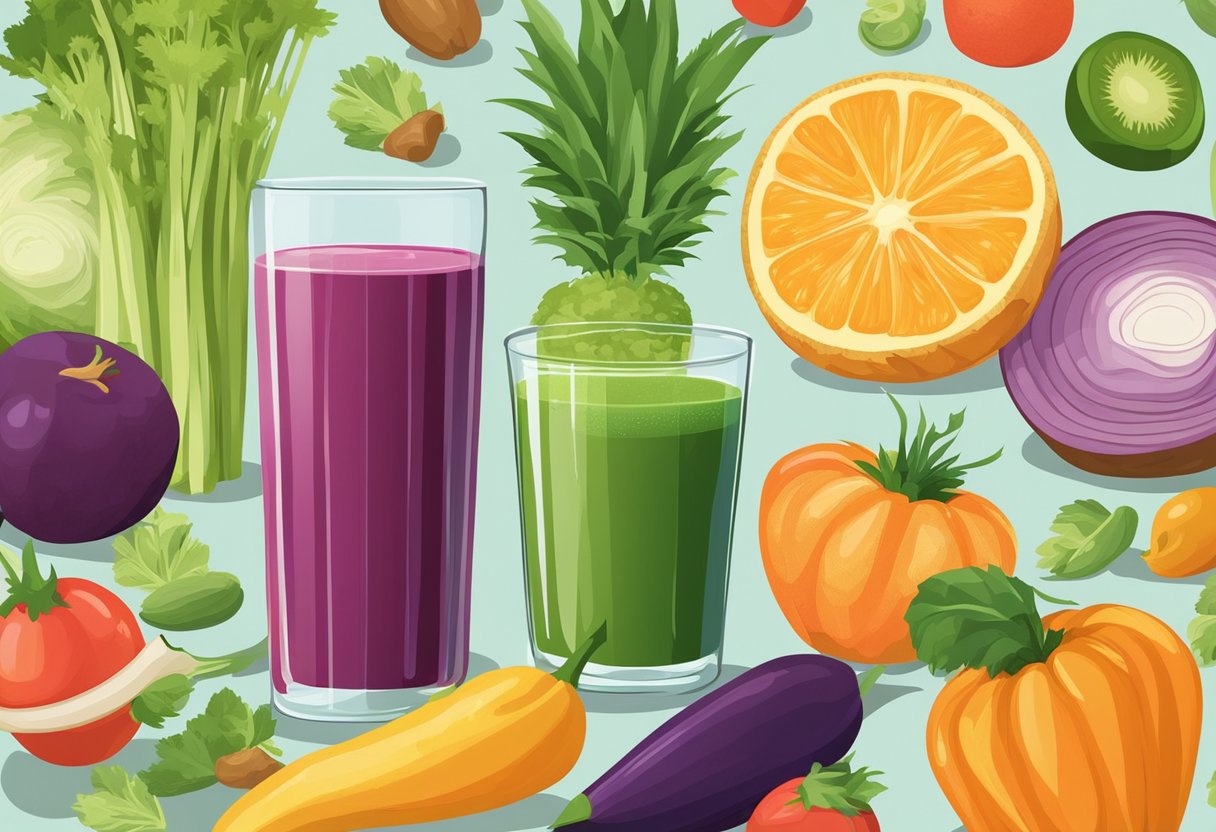
Vegetable juice offers a quick and easy way to boost your nutrient intake. It packs vitamins, minerals, and plant compounds from various veggies into one glass. One cup of vegetable juice typically provides around 50 calories and counts toward your daily veggie servings.
Many people find drinking juice easier than eating whole vegetables. This can help increase overall vegetable consumption. Veggie juices often contain nutrients like vitamins A and C, potassium, and antioxidants. These support health in different ways.
While juice can be nutritious, it lacks the fiber of whole vegetables. Fiber aids digestion and helps you feel full. For the most benefits, drink veggie juice as part of a diet rich in whole fruits and vegetables. This gives you a mix of nutrients in both liquid and solid forms.
Nutritional Profile of Vegetable Juice
Vegetable juice packs many nutrients into each serving. It offers vitamins, minerals, and plant compounds that support health. The exact mix depends on the vegetables used.
Vitamin and Mineral Content
Vegetable juice is rich in vitamins and minerals. Most contain high levels of vitamin C, which helps the immune system. Vitamin A is also common. It supports eye health and skin.
Many vegetable juices provide vitamin K. This nutrient aids blood clotting and bone health. Potassium is another key mineral found in these drinks. It plays a role in heart and muscle function.
Some juices offer iron, which helps carry oxygen in the blood. The amounts vary based on the veggies used. Leafy greens often boost iron content.
Fiber and Antioxidants
Vegetable juices contain some fiber, but less than whole vegetables. Fiber aids digestion and helps you feel full. It can also lower cholesterol levels.
These drinks are packed with antioxidants. These compounds fight damage in the body. They may help prevent some diseases.
Different colors mean different antioxidants. Red juices might have lycopene. Green ones often contain chlorophyll. Orange and yellow drinks may offer beta-carotene.
Natural Sugars vs. Added Sugar
Vegetable juices have natural sugars from the plants used. These sugars come with fiber and nutrients. They don't cause quick spikes in blood sugar like added sugars do.
Some brands add extra sugar to improve taste. This can turn a healthy drink into a less healthy choice. It's best to pick juices with no added sugars.
Reading labels helps you spot added sugars. Look for words like sucrose, fructose, or corn syrup. Choose 100% vegetable juices for the most benefits.
Health Benefits of Vegetable Juice
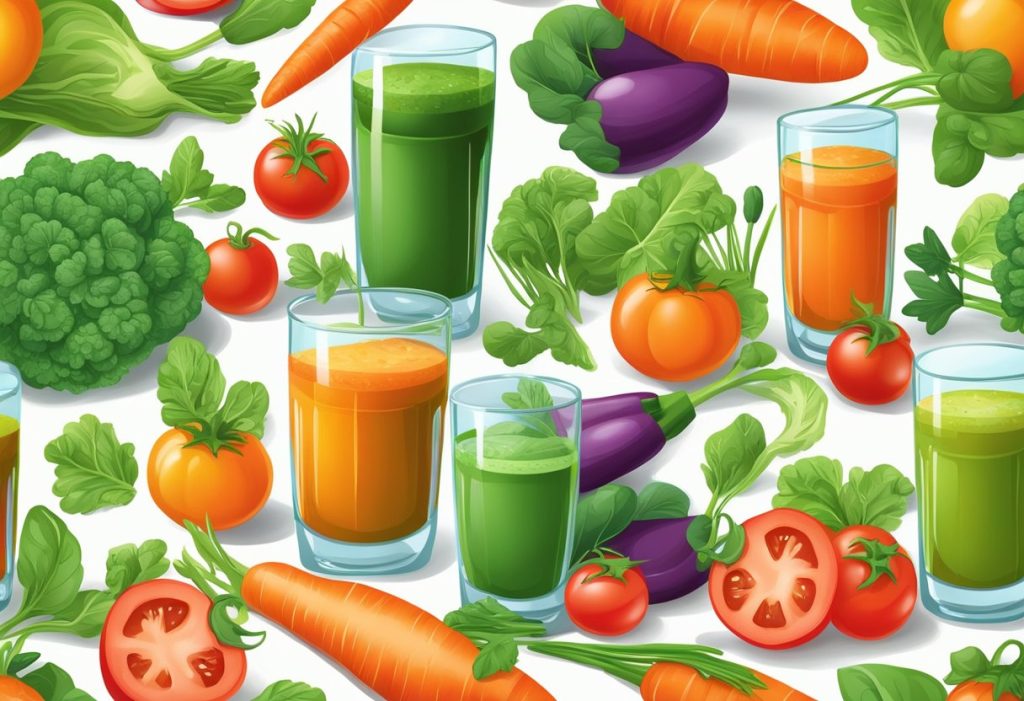
Vegetable juice offers many health perks. It gives your body key nutrients and may help with several health issues.
Cardiovascular and Blood Sugar Management
Vegetable juice can boost heart health. It has potassium, which helps control blood pressure. Many veggie juices also have magnesium. This mineral supports good blood flow.
Some juices may help manage blood sugar. Leafy green juices are low in sugar and high in nutrients. They can be a good choice for people watching their blood sugar.
Beet juice stands out for heart health. It may lower blood pressure and boost exercise stamina. Tomato juice has lycopene, which is good for the heart too.
Digestive Health and Immune Support
Veggie juice can aid digestion. It's easy for the body to absorb. This means quick nutrient uptake. But whole veggies have more fiber, which is key for gut health.
Many vegetable juices boost the immune system. They're packed with vitamins A and C. These vitamins help the body fight off germs.
Carrot juice is rich in beta-carotene. This turns into vitamin A in the body. Vitamin A is crucial for eye health and immune function.
Anti-Inflammatory and Anticancer Properties
Some veggie juices fight inflammation in the body. This can help with many health issues. Juices high in antioxidants are best for this.
Certain vegetable juices may lower cancer risk. They have compounds that fight harmful cell changes. Cruciferous veggie juices like broccoli or kale are good choices.
Green juices often have high antioxidant levels. These protect cells from damage. This may help lower the risk of chronic diseases.
Turmeric added to juices can boost anti-inflammatory effects. It pairs well with carrot or orange juice.
Juicing vs. Whole Vegetables and Fruits
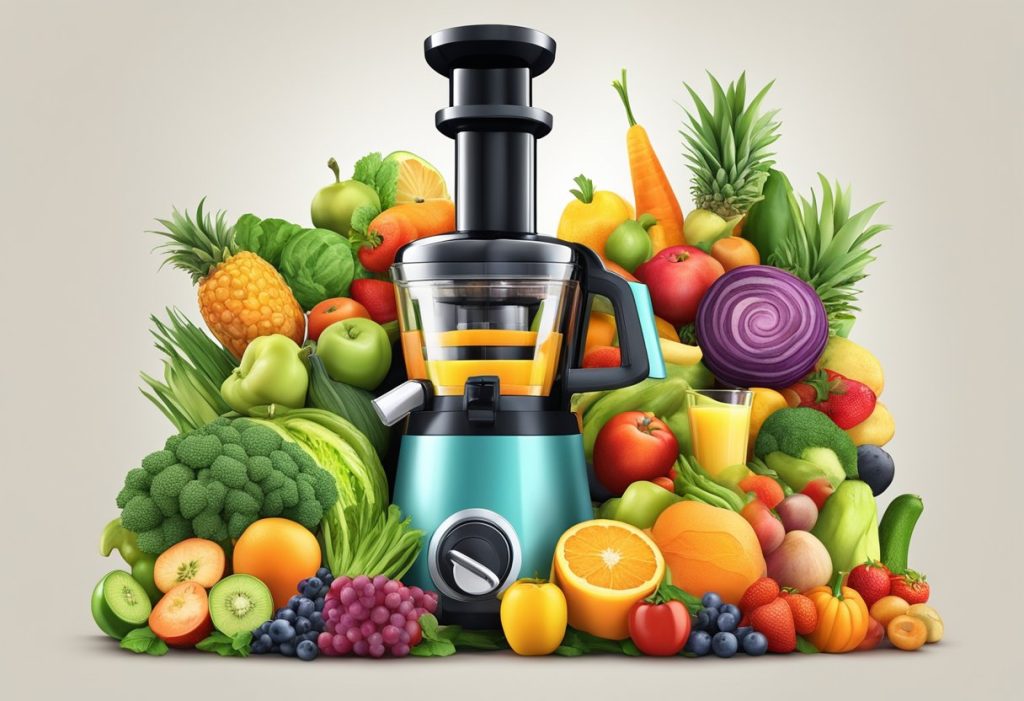
Juicing and eating whole produce each have unique pros and cons. The main differences lie in fiber content and how quickly nutrients are absorbed by the body.
Fiber Content Comparison
Juicing removes most of the fiber from fruits and vegetables. Whole produce contains much more fiber than juice. Fiber helps with digestion and blood sugar control. It also makes you feel full.
A cup of carrot juice has less than 1 gram of fiber. But a cup of raw carrots has about 3-4 grams. Fiber is found in the pulp, skin, and flesh of produce. These parts are often discarded when juicing.
Eating whole fruits and veggies provides all their natural fiber. This can aid weight management and gut health. It may also lower the risk of some diseases.
Caloric Density and Nutrient Absorption
Juices are more calorie-dense than whole produce. It's easy to drink a lot of juice quickly. This can lead to taking in more calories and sugar than intended.
A cup of apple juice has about 114 calories. But a medium apple has only about 95 calories. The apple also has fiber to help slow sugar absorption.
Juices allow for quick nutrient absorption. The body can take in vitamins and minerals from juice very fast. This can give a quick energy boost.
Whole fruits and veggies take longer to digest. Nutrients are released more slowly. This helps maintain steady blood sugar levels.
Choosing Vegetables for Juicing
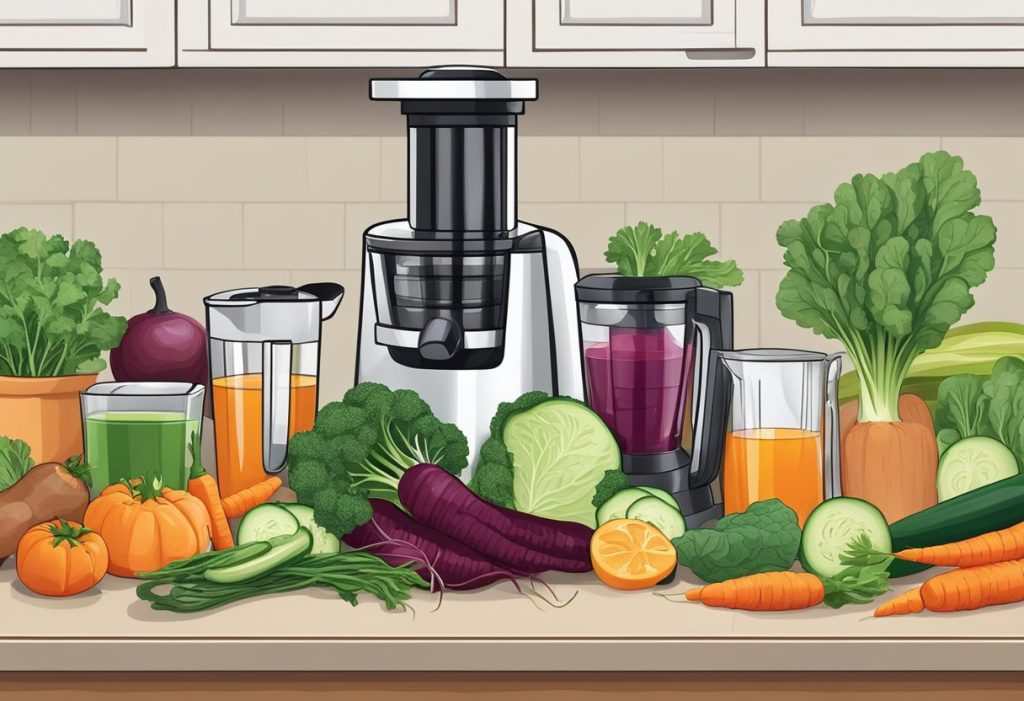
Picking the right vegetables is key for tasty and nutritious juice. Some veggies are better suited for juicing than others based on their flavor, nutrient content, and juice yield.
Leafy Greens and Cruciferous Vegetables
Leafy greens pack a nutritional punch in juices. Spinach has a mild taste and blends well with other ingredients. It offers vitamins A and C, plus iron. Kale is another powerhouse, rich in antioxidants and fiber.
Cucumber adds refreshing flavor and lots of liquid to juices. It's low in calories but high in vitamins K and C. Green leafy vegetables like Swiss chard and collard greens are also good choices.
For a spicier kick, try adding arugula or watercress. These greens have a peppery taste and are full of nutrients.
Root Vegetables and Herbs
Carrots are a juicing staple. They're sweet, packed with beta-carotene, and mix well with other veggies. Beets add a beautiful color and earthy flavor to juices. They're rich in folate and manganese.
Celery offers a crisp taste and is full of vitamins A, C, and K. It pairs nicely with apple for a balanced flavor. Ginger root can add zing to any juice blend. It has anti-inflammatory properties too.
Parsley is more than just a garnish. It's high in vitamin C and adds a fresh taste to green juices. For variety, try juicing fennel bulbs or radishes. They add unique flavors and extra nutrients to your drink.
Preparation and Juicing Techniques
Proper preparation and techniques are key to creating tasty, nutritious vegetable juices. The right equipment and methods help extract the most nutrients from produce. Balancing flavors and following recipes can make juices more enjoyable.
Juicing Equipment and Methods
A juicer is the best tool for making vegetable juice. Centrifugal juicers are fast but less efficient. Masticating juicers extract more juice and nutrients. Wash all produce well before juicing. Remove seeds, stems, and thick peels. Cut vegetables into smaller pieces that fit the juicer chute.
Feed softer items like leafy greens first, followed by harder veggies. This helps push everything through. Alternate between soft and hard produce for the best results. Collect juice in a clean container. Some pulp is normal. Strain the juice if you prefer it smoother.
Clean your juicer right after use to prevent buildup. Most parts can go in the dishwasher. Hand wash delicate pieces.
Flavor Balancing and Recipes
Vegetable juices can taste bitter. Balance flavors by mixing in sweeter produce. Good options include carrots, apples, or pears. Start with 3 parts veggies to 1 part fruit. Adjust to taste.
Lemon juice adds brightness. Fresh herbs like mint or basil provide extra flavor. Try these combos:
- Carrot, apple, ginger
- Cucumber, celery, lemon
- Beet, orange, mint
Dilute strong juices with water or coconut water. This makes them easier to drink. Chill juice or serve over ice for a refreshing taste.
Don't go overboard with juicing. Enjoy vegetable juice as part of a balanced diet. Aim for 1-2 small glasses per day. Too much can add extra calories and sugar.
Understanding Juice Labels and Brands
Juice labels give key details about what's inside the bottle. Brands differ in their ingredients and how they make their juices.
Deciphering Nutritional Information
Juice labels show calories, sugar, and vitamins per serving. The serving size is often 8 ounces. Check for added sugars, which can boost calories.
Many juices list percent daily values for nutrients. These tell how much of your daily needs the juice provides. Vitamin C and potassium are common in vegetable juices.
Some labels say "100% juice." This means no extra sugar or water is added. "From concentrate" means the juice was dried and rehydrated.
Differences in Commercial Juice Products
V8 is a well-known vegetable juice brand. It mixes tomato juice with other veggies. Some V8 products have fruit juices added for sweetness.
Carrot juice is often sold on its own. It's high in vitamin A. Tomato juice is rich in lycopene, an antioxidant.
Some brands pasteurize their juices. This kills germs but may reduce nutrients. "Cold-pressed" juices claim to keep more nutrients intact.
Watch out for natural sugars in fruit and veggie blends. Even with no added sugar, these can affect blood sugar levels.
Risks and Side Effects of Vegetable Juicing
Vegetable juicing can have some drawbacks. Too much juice may cause health issues. Some juices have high sugar or sodium. There are also risks of kidney stones and harmful bacteria.
Sugar and Sodium Content
Some vegetable juices have lots of sugar. Beet and carrot juice are high in natural sugars. This can raise blood sugar levels. People with diabetes should be careful.
Sodium is another concern. Store-bought juices often have added salt. This can be bad for people watching their sodium intake. Too much sodium may raise blood pressure.
It's best to make juice at home. You can control what goes in it. Avoid adding extra sugar or salt. Mix in low-sugar veggies like leafy greens.
Potential for Kidney Stones and Bacterial Contamination
Certain vegetables have oxalates. These can lead to kidney stones in some people. Spinach, beets, and rhubarb are high in oxalates. Don't drink too much juice from these veggies.
Juicing can also spread harmful bacteria. Wash all produce well before juicing. This helps remove dirt and germs. Clean your juicer after each use.
Store homemade juice safely. Keep it in the fridge. Drink it within 24 hours. Old juice can grow bad bacteria.
Some good bacteria may be lost in juicing. Whole veggies have fiber that feeds good gut bacteria. Juice lacks this fiber.
Juicing as Part of a Balanced Diet
Vegetable juice can be a helpful addition to a healthy eating plan. It offers a quick way to boost nutrient intake and can support weight management goals when used wisely.
Inclusion in Weight Loss Regimens
Vegetable juice may aid weight loss efforts. It's low in calories but high in nutrients. This can help people feel full while cutting back on overall calorie intake.
Some juices have very few calories. For example, a cup of carrot juice has about 95 calories. Cucumber juice has even less.
Adding juice to meals can increase veggie intake without lots of extra calories. This may help people stick to their diet plans.
But juice shouldn't replace whole foods completely. Solid foods are important for feeling satisfied. A mix of juice and whole vegetables is best for weight loss.
Ensuring Adequate Protein and Caloric Intake
Juice alone doesn't provide enough protein or calories for a balanced diet. Most vegetable juices are very low in protein.
To get enough protein, add other foods to meals with juice. Good options include:
- Greek yogurt
- Hard-boiled eggs
- Nuts or seeds
For more calories, use juice as part of larger meals. Don't rely on it as a meal replacement.
Some people mix protein powder into juice. This can boost protein content. But whole food sources are often better.
Remember that juice removes fiber from vegetables. Fiber is key for feeling full. Eat whole veggies too to get enough fiber in your diet.
apps-fileview.texmex_20240808.01_p1 nutrition-facts-and-benefits-of-vegetable-juice.html Displaying nutrition-facts-and-benefits-of-vegetable-juice.html.

